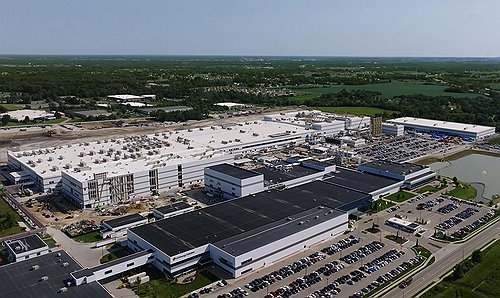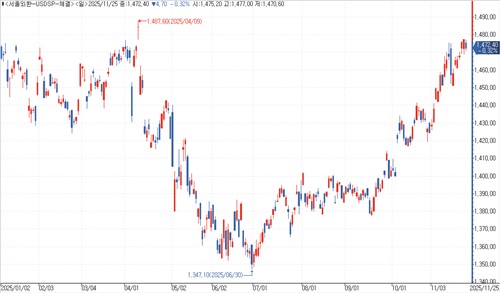(Seoul=Yonhap Infomax) Hak Seong Kim = As the USD/KRW exchange rate surges toward the 1,500-won mark, South Korea’s battery industry is expressing relief that its large-scale US investments have already peaked, easing financial pressure.
The nation’s three major battery cell makers—LG Energy Solution Ltd., SK On Co., and Samsung SDI Co., Ltd.—have each invested trillions of won annually to expand production capacity in the United States. However, with electric vehicle market growth slowing, these companies have shifted focus to operational efficiency.

According to LG Energy Solution’s quarterly report released on the 26th, the company’s capital expenditures through Q3 2025 totaled 8 trillion won ($6.2 billion), a 14% decrease from 9.3 trillion won ($7.2 billion) spent in the same period last year.
SK On’s cumulative acquisition of tangible assets for the first three quarters stood at 3.2 trillion won ($2.5 billion), less than half of the 7.8 trillion won ($6.0 billion) recorded a year earlier.
Samsung SDI also reduced its tangible asset acquisitions by more than 40%, from 4.1 trillion won ($3.2 billion) to 2.4 trillion won ($1.9 billion) over the same period.
This moderation in overseas investment by the three major battery cell makers has helped them avoid the direct impact of the recent sharp rise in the exchange rate. All three companies have been expanding facilities primarily in the US, and if they had been required to make large-scale investments amid the current weakness of the won, their financial burden would have increased significantly.
The USD/KRW exchange rate, which fell to 1,347 won in June, has steadily climbed, closing at 1,472 won in regular trading on the previous day.
“US investments are executed in dollars, so if we still had to make significant investments now, the high exchange rate would have been a major burden,” said an industry official. “With capital expenditures now peaking out, that burden has eased to some extent.”

The rise in the USD/KRW exchange rate also has a positive effect on the financial performance of battery makers.
As of the end of Q3, LG Energy Solution reported dollar-denominated monetary assets and liabilities of 3.5 trillion won ($2.7 billion) and 8.9 trillion won ($6.9 billion), respectively, with liabilities more than double assets. The company estimates that a 10% increase in the USD/KRW rate (i.e., a weaker won) would reduce pre-tax profit by 534.5 billion won ($415 million).
However, LG Energy Solution noted that it hedges all dollar-denominated borrowings through currency forwards and swaps, so a 10% rise in the USD/KRW rate would actually increase pre-tax profit by 236.7 billion won ($184 million), largely because most of its sales are generated overseas.
Indeed, securities analysts have raised their earnings forecasts for LG Energy Solution this year, citing a higher-than-expected exchange rate in Q1.
SK On and Samsung SDI also stated that a stronger dollar improves their bottom lines.
Additionally, the US Advanced Manufacturing Production Credit (AMPC), which has supported the profitability of Korean battery firms, is paid in dollars, further benefiting these companies.
“A higher USD/KRW rate increases battery product sales revenue, but also raises costs for materials companies sourcing minerals overseas, offsetting some of the gains,” said a battery sector analyst at a securities firm. “The overall impact is positive, but not decisive for profitability.”
Another industry official described the impact of exchange rate fluctuations on earnings as “complex,” noting that effects can vary in different directions.
hskim@yna.co.kr
(End)
Copyright © Yonhap Infomax Unauthorized reproduction and redistribution prohibited.

